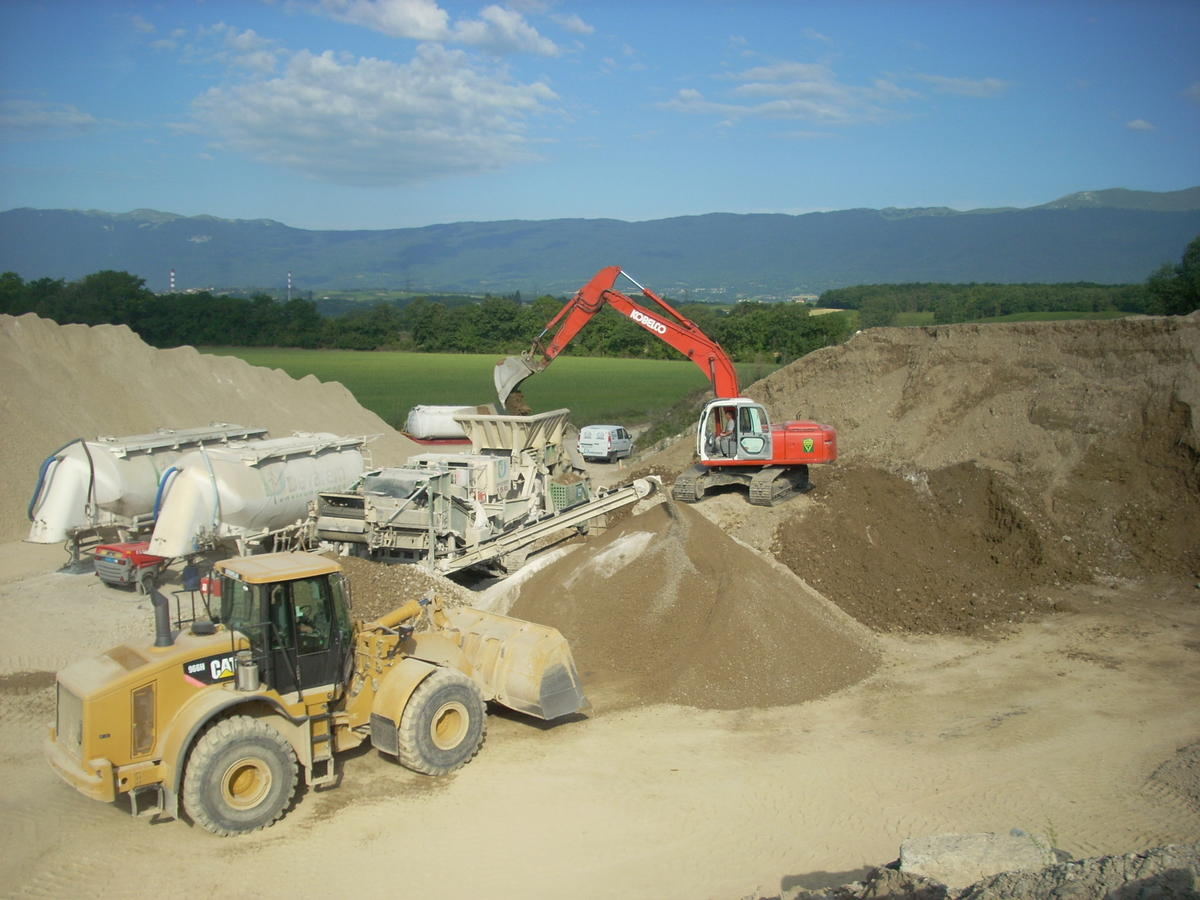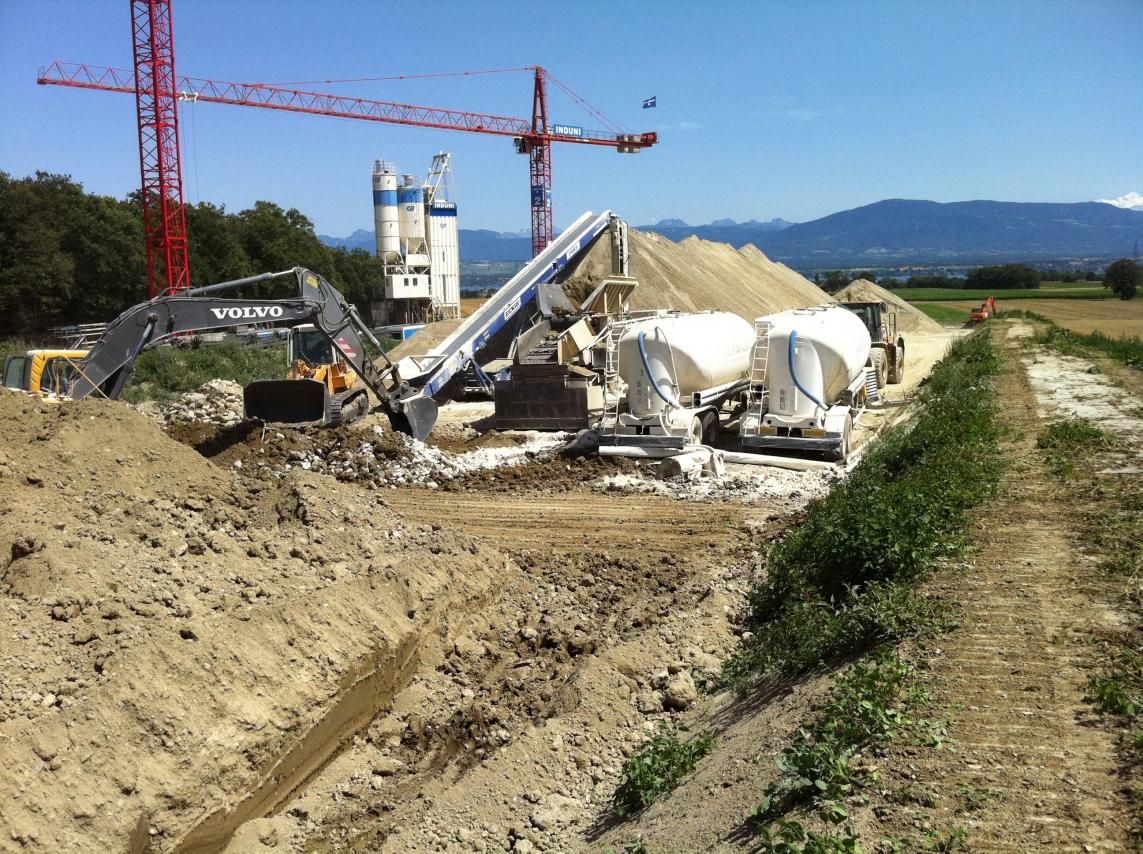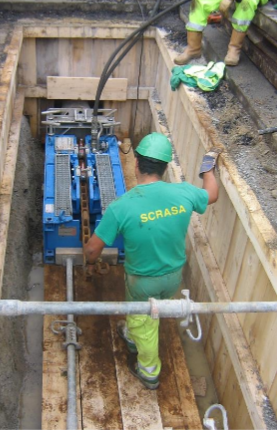SCRASA provides solutions to problems in the construction sector

Excavated material are the most important flow of materials in Geneva (1). Today companies in the building sector are under threat from a shortage of raw materials, and are faced with saturated landfills, given the large quantities of site rubble they are called on to manage. While projects in the area generate more than 1 million m3 of excavated material per year, there is now less than 200,000 m3 available in Geneva gravel pits (2).
Gravel pits close to saturation and a thriving municipality. How are Geneva companies adapting their business to deal with this situation?
Interview by GENIE.ch with Bruno Momplot, Director of the design department, QSE of SCRASA and Pascal Lhoneux , responsible for the business relations at SCRASA
With fifty years in civil engineering, SCRASA has acquired experience in the areas of materials and construction sites. Under the Devarem process, it has been able to deepen its expertise in working with the Lille area, subject to a shortage of alluvial materials fifteen years ago.
Among SCRASA’s different means of action, two are of particular interest with regard to with this problem:
I. The process of recycling and recovery of materials: Devarem
II. Techniques for working without trenches, such as FRP cladding and cracking
I. Why is the Devarem process developed in 2008 by SCRASA, through its subsidiary Soreval, an alternative and a solution to the problem of shortage of raw materials and the conservation of natural resources?
The Devarem process is today applied in the Peney gravel pit. It aims to recycle earthwork rubble or inert materials, to avoid sending them to landfills. This process reduces ill-conceived consumption of natural resources while improving the carbon footprint by reducing lorry traffic.
One cubic metre of material treated by this method frees up one cubic metre of landfill and saves the extraction of one cubic metre of natural gravel.
Since 2008, Devarem has been used on over 150 sites and has avoided storing over 200,000 tonnes of rubble in landfills, or the equivalent in cubic metres of natural gravel that hasn’t needed to be extracted. Today, 80% of extracted materials can be recycled via Devarem. It should therefore be used more, and to do this requirements should be drawn up that recognize the excellent technical characteristics of this material.
We recently acquired a Devarem treatment plant that can be transferred to the construction site. This machine will allow us to further optimize recycling and transportation. So we will no longer need to unload materials at Soreval to then reload them onto a lorry and take them to the construction site.

The Devarem 50 installation platform on the Soreval site, Bois-de-Bay Industrial Zone
II. The federal law on water protection requires towns to revise the planning of their sanitation system. In their action plans, municipalities are obliged to bring their fresh water and waste water collection systems into compliance. Scrasa has developed techniques for rehabilitating networks that collect or convey fluids which aim to reduce the environmental impacts of its operations. What are these techniques?
The traditional method which was to dig, demolish the collector and replace it with new equipment has given way to a new technique called: FRP (Fibreglass reinforced polyethylene) cladding. It consists in lining the inside of the collector with cladding without opening the existing terrain. Only access to both ends of the section is required. Over the last four years, 10,715 linear metres of cladding have been fitted, including 8,495 metres in the Canton of Geneva and 2,220 metres in the Canton of Vaud.
Similarly, the ageing of iron or steel industrial pipes requires renewal using the "cracking” method.
Services Industriels de Genève, the main ordering institution, are using this technique to renew their water and gas pipes.
Over the past decade, 30,000 metres of piping have been "cracked".

These techniques for work without the need for trenches provide the following environmental benefits:
- Reduced amount of waste (earthwork spoil)
- Filler materials not used to backfill collectors
Over the last four years, the FRP cladding activity has led to a saving of 50,000 m3 of backfill/rubble, or 25,000 m3 of material not excavated, and 25,000 m3 of natural gravel saved. The cracking method has led to a saving of 70% of backfill/rubble, or a volume of 30,000 m3. - Limiting noise pollution (excavators, lorries, compressors, etc.)
- Reducing the footprints of construction sites: detours, access for vehicles and pedestrians, parking spaces, etc.
Rehabilitation of a grey iron water pipe using the cracking method at chemin du Clos, Plan les Ouates
For further information:
Bruno Momplot, Director of the design department, QSE of SCRASA
Pascal Lhoneux, responsible for the business relations at SCRASA
For more information:
(1) Ecologie industrielle à Genève - Premiers résultats et perspectives (Industrial ecology in Geneva - Initial results and prospects)
(2) Genève est envahi par ses déchets de chantier - Tribune de Genève (Geneva is invaded by its construction waste - Tribune de Genève)